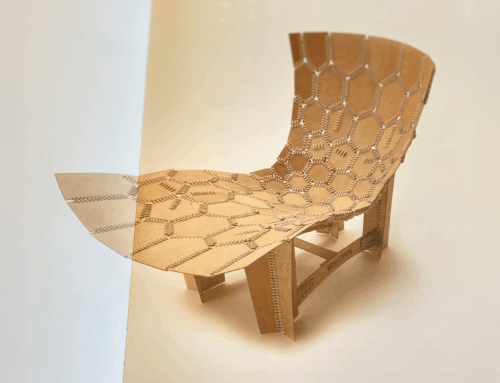This blog first proposed the replacement of trophy buildings with street art back in 2002.
In a piece called “Trophy buildings are over” we argued that because they are conceived as spectacles, so-called signature architecture would be subject to the law of diminishing returns: the novelty would wear off, and buildings conceived as tourist destinations would be hard to sustain.
The modest size of the adoring horde outside LA’s $270 million Gehry (photographed above in February) would seem to confirm this prognosis.
The decline of architectural trophyism coincides with an interesting debate about the use of existing, but abandoned, industrial buildings. Until the bust, most large empty buildings would have been jumped on by developers and turned into egregious lofts. These days, the pressure is off and cities are considering more interesting uses.
Last weekend in Nice, for example, I learned that the city is contemplating what do do with 40,000 square metres (400,000 square feet) of disused abattoirs (below).
Sophie Duez, a celebrated actor, and municipal councillor, has been appointed president of a “Committee of Reflection” to stage a series of “debattoirs” during the year. A wide variety of cultural, social and community groups will participate.
Duez argued, in our conference at the weekend, that cultural spaces need to be “less sacred” if they are to “nourish the city”, and that, for her, a priority in this “cultural eco neighbourhood” should be socially creative activity rather than the “cultivation of the self”.
The conference, which was organised by Norbert Hillaire, had as its title “La côte d’azur: du bétonnage du littoral à l’urbanisme écologique” – “The côte d’azur: from concreting over the coast, to an ecological urbanism”.
(It’s probably a coincidence, but I choose to perceive the Nice project as evidence of a trend in France to transform disused abattoirs into arts centres. Chalon has already turned its ex-abattoir into one of nine national centres of street arts that have been established across France since 2005).
The Nice abattoirs, being closer to the northern edge of the city, than to the coast, are well-located to help rebalance the relationship between “city” and “nature” that a sustainable future will entail.
The question of grand architectural statements is raised by an even larger project along the coast: the transformation of the Var Valley into an Eco Valley
The valley (above), which spans over 25,000 acres from the Mediterranean coast to the Alpine foothills, is a vast project that will evolve over decades. The project’s leader, Thierry Bahougne, wondered, in our discussion in Nice, whether the commission of a signifcant architectural…something…would attract potential stakeholders and give coherence to the enterprise through time.
I’d be in favour of involving architects in Eco Valley – but not to make grand architectural statements. Given that Bahougne’s priorities are to promote “best practices in sustainable governance” and to set “a global example for regional planning that responds totally to the challenges of sustainable development” – a large shiny building would not denote those qualities.
Rather than splash out $250 million on a signature building, a more exciting design challenge would be would be communicate the success of Eco Valley as a narrative about the restoration and nurture of its existing watersheds and biodiversity. The biologist E O Wilson writes about the need for an “land ethic” in development – and an idea like that is so powerful that no physical embodiment of it would be need to be built. The great national parks don’t have signature buildings in them, so why Eco Valley?
My own contribution to the meeting involved dropping a heavy hint that the city’s abattoirs looked like the perfect venue for an event like City Eco Lab (below) that we organised last year in St Etienne. I’m convinced that every city needs a market place in which people can present grassroots projects, exchange experiences, and involve fellow citizens in ever larger numbers as participants in these experiments. The ideal scenario, for me, would be to *combine* hands-on project stalls with the emergent art practices that the city seems to have in mind.
My plan to save the city of Nice $250 million







